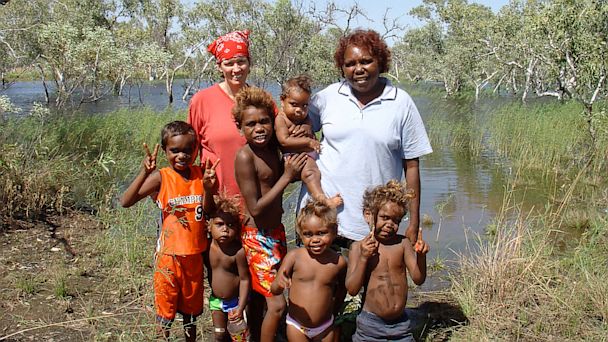New Language Uncovered in Indigenous Australian Community

(Image Credit: Noressa White Napurrurla)
A new language spoken only by people 35 and younger has been discovered in a remote community in northern Australia.
The language, known as Light Warlpiri, was uncovered by Carmel O'Shannessy, an assistant professor of linguistics at the University of Michigan, while she was working as a teacher at a school in Lajamanu, an indigenous community in northern Australia's Tanami Desert, she said.
Light Warlpiri is a melding of English, an English-based Creole language known as Kriol and the original language spoken by the indigenous community called Warlpiri, she said.
O'Shannessy said that while she worked at the school, she began to notice that students would switch between the languages they spoke in the same conversation, and sometimes even switched back and forth between languages within the same sentence. She then started to record and transcribe people speaking the language to try to identify the linguistic patterns in their speech.
"It turned it was very systematic in a very interesting way," she said. "The way that people combined languages, they used verbs almost from all varieties of English and Creole, but they used word endings from traditional Warlpiri.
"In addition to that, they added a new grammatical structure which isn't in any of the source languages, but it comes from them," she said.
The population of Lajamanu is around 600 people, she said. She believes only 350 indigenous people she can speak Light Warlpiri.
O'Shannessy said she thinks that Aboriginals began switching between languages in conversation - what she described as code switching - sometime during the 1970s or 1980s.
She said she could not pinpoint when Light Warlpiri came to be, but said the grammatical structures used in the new language are only used by people who were 35 or younger.
"Older people don't use these new structures," she said. "So it gives an idea of a different time."
There is no written equivalent of the language because there is no need, O'Shannessy said.
"It's just so new," she said. "Also, the traditional language Warlpiri is written, that's the language that the people in the community want to be used in the school."
While Light Warlpiri is one language students and young adults speak, they still speak Warlpiri, as well as English and Kriol, O'Shannessy said.
"They are multilingual, and it's very important [to older members of the community] that young people continue to speak Warlpiri," she said. "They don't mind Light Warlpiri, but what's really important to them is the maintenance of the traditional language."